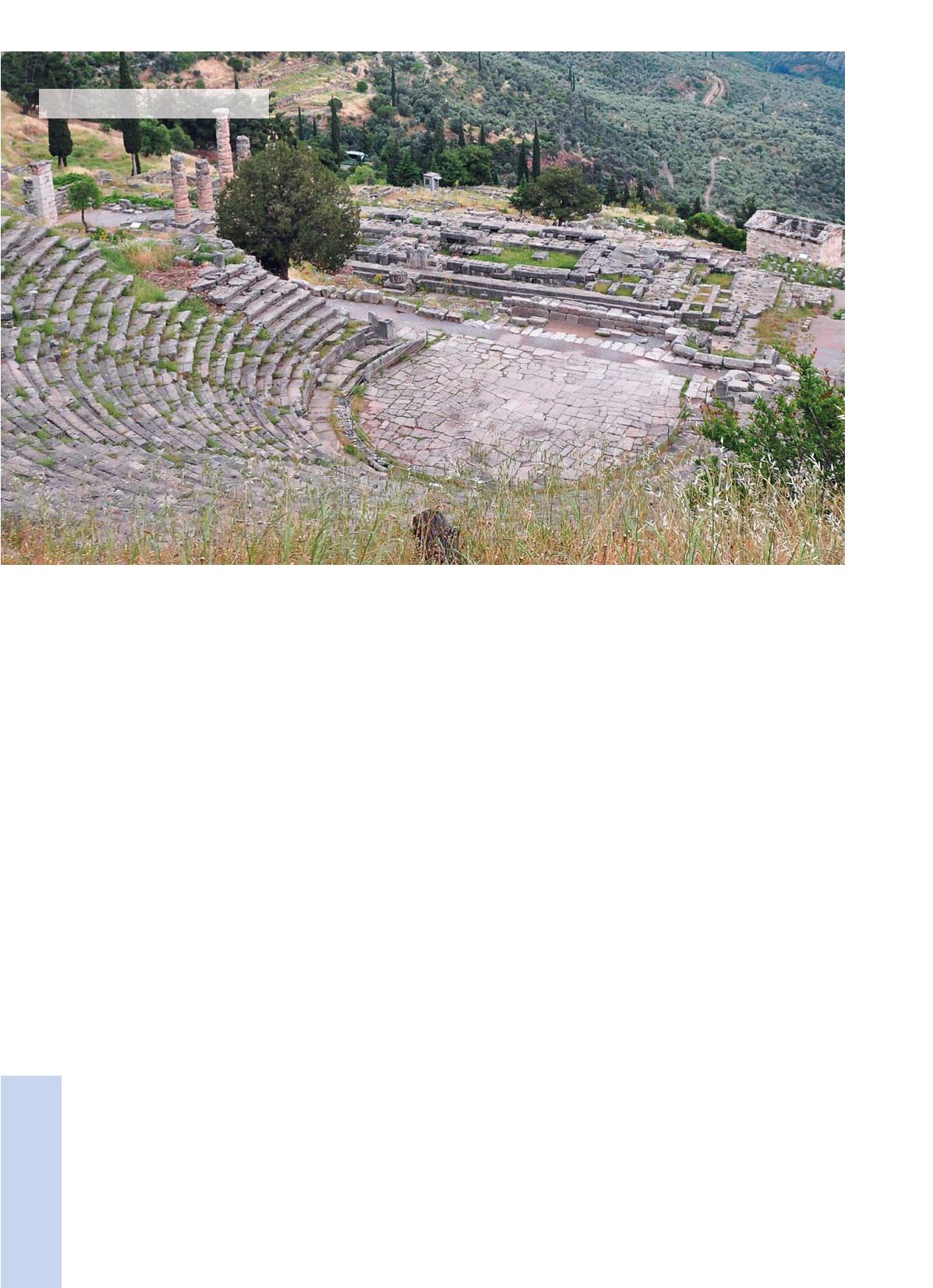
while its current form dates back to the early
Roman period (1st Century CE).
The
orchestra
, the actual area where the perform-
ances and the musical contests were held, has a
diameter of 18.50 m and is surrounded by a 2.20
metre-wide corridor that enabled the passage of
spectators and covers a conduit for the drainage of
rainwater. The horse-shoe shape and paving of the
orchestra’s
floor with irregular slabs are Roman-era
interventions. The deep, amphitheatric
koilon
, has a
total capacity of 5,000 spectators and is vertically
divided into two uneven zones by a horizontal land-
ing, the “
diazoma
”, which enables the movement of
spectators among the seats. The lower
koilon
has
27 rows of seats and is divided into 7 clusters of
seats by vertical symmetrical staircases, while the
upper
koilo
n comprises 8 rows and is divided into 6
clusters. The seats are inscribed with the names of
distinguished spectators, both private citizens and
officials. Facing the
koilon
and the
orchestra
was
the
skene
of the theatre, a structure of limited
height, so as not to hide the splendid natural
scenery of the Delphic landscape.
The only surviving part of that rectangular building
is its foundation, on a level lower than that of the
orchestra
. To the north of the stage proper stood the
proscenium
, a small, pillared gallery facing the
orchestra
. In the 1st century CE the front of the
proscenium
was adorned with a marble relief frieze.
Earthmoving works and the first excavations on the
theatre’s site started in 1895. In the interwar period
and as part the first Delphic Festival of May 1927 —
which was repeated in 1930— the Delphi theatre
hosted, in front of an international audience, the first
ancient tragedy performances to be held in an
ancient theatre after almost 2,000 years
(“Prometheus Bound” and “The Suppliants” by
Aeschylus). The mastermind of the ancient the-
atre’s revival was poet Angelos Sikelianos, who,
together with his American wife Eva Palmer, had
the vision of turning Delphi into a global spiritual
centre, the “navel of the earth”.
In 1987 UNESCO included the archaeological site
of Delphi in its list of World Heritage Monuments.
d) Theatre of Dion
The ancient theatre of Dion is located in Pieria, on
the north foot of mount Olympus, south of the syn-
onymous city that was the ancient Macedonians
sacred city of par excellence, and west of the tem-
ple of Demeter. Its construction is dated in
Hellenistic times and, most probably, during the
reign of Philip V (221-179 BC).
The theatre is built on the slope of a low hill, and the
monument’s architect made perfect use of the ter-
rain, partially removing the earth and using artificial
landfills, in order to create one of the most efficient
structures of this kind.
The
orchestra
, approximately 26 metres in diame-
ter, had a hard-pressed earth floor, and the
koilon
had seats made of clay plinths, a peculiarity that is
not encountered in any other ancient theatre, while
Trade with Greece
118
Theatre of Delphi


